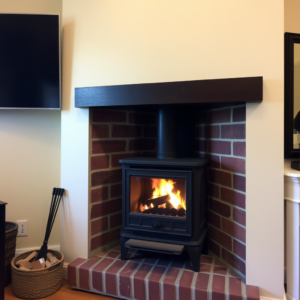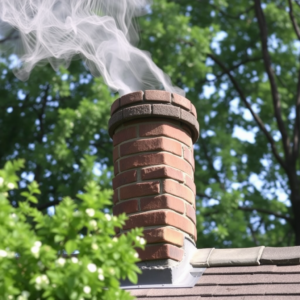
A fireplace brings a cozy glow, timeless charm, and soothing warmth to your home during chilly months. But before you enjoy its magic, there’s one essential question to ask yourself… How do I know if my chimney is safe to use? Keeping the fireplace well maintained does not only guarantee efficient use of fire but also safeguards the house and its inhabitants. There are essential and necessary precautions to take in order to ensure that firewood use is safe and free from worry all season long, from identifying possible hazards to keeping it in good condition.
The Importance of Fireplace and Chimney Safety
Using a fireplace without considering safety can lead to serious problems, such as fire combustions, carbon monoxide poisoning, or structural impairment of the home. The lack of chimney maintenance makes it possible for flammable materials like creosote to form or for blockage due to debris—both of which easily give way to house fires. By ensuring routine inspections and maintenance, you can safely enjoy the great benefits of owning a fireplace while keeping potential dangers at bay.
How Do I Know If My Chimney Is Safe to Use?
You might be wondering, How do I know if my chimney is safe to use? This common query can be resolved by a series of regular and preventive maintenance activities. Below describe some key steps that can be undertaken.

Start with a Thorough Inspection
Proper fireplace safety concerns itself with chimney examination in detail. Therefore, it should be done on an annual basis, and the best time for this would be just before the colder months set in. Things you should look for during an inspection include:
- Creosote buildup: Creosote, a sticky black substance, will line the inside of the chimney walls after repeated burning. A lot of creosote indicates that your chimney needs cleaning urgently.
- Cracks or deterioration: External and internal assessments of the chimney must be done for cracks, gaps, or other wear. Deterioration can not only weaken the structure but also allow harmful gases to enter your home.
- Blockages: Animals, nests, or debris can obstruct the chimney, preventing proper ventilation and increasing the risk of carbon monoxide exposure.
- Damaged chimney caps or crowns: If the chimney crown is cracked, water, snow, and animals can easily find their way in, causing leaks and possibly further damage.
Look Out for Signs of Smoke Leaks
An easy way to inspect a fireplace for safety is to see if smoke is entering into the home. If smoke discoloration appears on walls around the fireplace or if a distinct smoky smell fills the room when the fireplace is not in operation, there could be problems with airflow and/or blockages.
Test the Draft
A well-functioning fireplace depends on proper airflow, or draft, to channel smoke safely up and out. To check if your draft is working, light a small piece of kindling and hold it near the flue opening—the passage inside the chimney. If the smoke flows smoothly upward, your draft is in good condition. However, if the smoke drifts back into the room, it could indicate a blockage or inadequate ventilation.
When to Call in the Professionals?
While some chimney maintenance tasks can be performed by homeowners, certain issues require the expertise of a professional. Call a certified chimney sweep or inspector if you notice:
- Persistent smoke entering your home
- Rapidly accumulating creosote, even after cleaning
- Unexplained odors coming from your fireplace
- Structural damage, such as leaning chimneys or severe cracks
Professional services, such as video inspections, can help identify hidden problems that may not be visible during a surface-level check.
Recognizing the Consequences of Neglect
A neglected fireplace can quickly go from a cozy focal point to a safety hazard. For example, chimney fires are often caused by excess creosote build-up. These fires burn at extremely high temperatures and may spread to other parts of the house. Similarly, when there is poor ventilation or blockage, this odorless and colorless gas can wreak great havoc on health if it goes undetected.
Best precaution would be to install smoke and carbon monoxide detectors in your. Added safety for these devices gives instant notification in case of a problem that may arise.
How do I know if my chimney is safe to use? It’s a question every homeowner with a fireplace should prioritize. From inspecting for damage and cleaning regularly to hiring professionals when needed, ensuring the safety of your fireplace is an ongoing process. By following the steps outlined above, you can enjoy the warmth and charm of a fireplace with peace of mind.
Previous